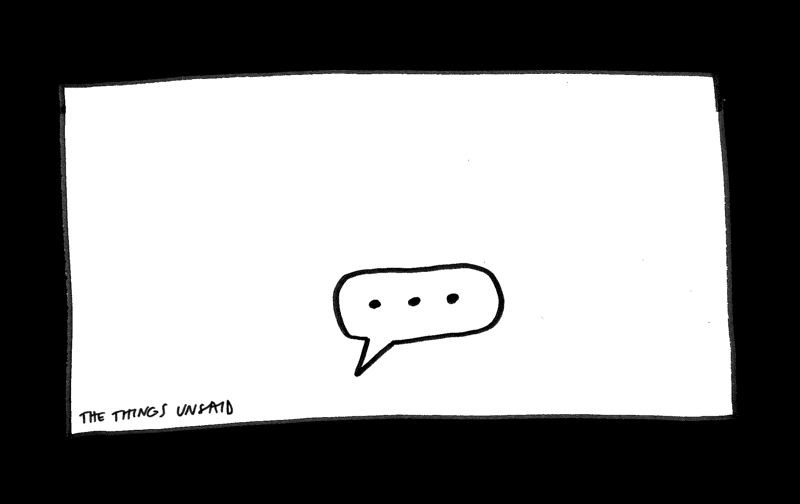Ghosts, Toast and the Things Unsaid

Hurrah! We’re doing a play.
A few words about Ghosts, Toast and the Things Unsaid.
We’re doing a play. Again.
This time we are at the 2016 Adelaide Fringe where we’ve teamed up with Sandpit to deliver theatre with digital at the core. And once again I’m extremely excited about both the theatre that we create and what we will learn from the experience.
“In collaboration with Google’s Creative Lab, Sandpit’s intimate performance features two ghosts (the audience) revisiting the kitchen(s) where they grew up, fell in love and refurbished, over 50 years. Audiences of two will (digitally) tune in to the inner thoughts of a couple at three stages of their life.”
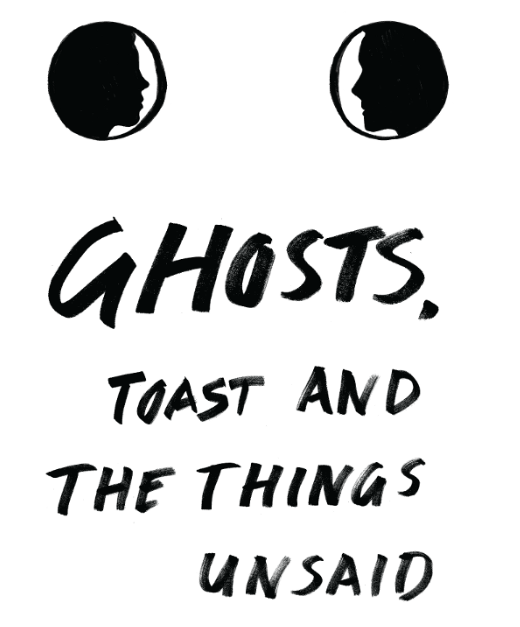
I am not a total newcomer to theatre, but like most of the bums on the seats at any commercial theatre I remain wilfully naive to the tricks of the stage and enthralled by any company that can enchant an audience. I will happily suspend my disbelief and am illiterate in theatre jargon. But my friends are no longer surprised when I say “we’re doing a play!”. They do not raise so much as a quizzical eyebrow as I leap about and declare it to be “our most fascinating project yet!”.
I work for Google’s Creative Lab in Sydney, and we have been ‘doing’ a play or equivalent for about 7 years now. It used to be hard to explain why we might be involved in a play, what Google got out of it, or even what we were trying to do. But with repetition comes a certain clarity, or less opacity (hopefully). This document is my semi-traditional attempt to explain the compulsion, to explain what Ghosts, Toast and Things Unsaid is, why Google might allow us to use theatre for our experiments, and what we hope to achieve with it.
Holding a phone during Shakespeare is just ugly.
When we started our first drama project in 2010 I wrote quite a long prologue about what we hoped to achieve and why. [Dream 40 with Sarah Ellis and Geraldine Collinge at the Royal Shakespeare Company]. We even made a film about how it would work. And then, afterwards (in 2012) I wrote an even longer epilogue in order to document what I had learnt. I learnt a lot. The most important learning was that the physical presence of technology can detract from the experience — for which I deserve some sort of Ig Nobel Tony award. In other words: holding a phone during Shakespeare is just ugly. But the problem wasn’t the idea, or the information, it was the form, that ugliness; for me, the potential of the unseen layers of information to augment the story-world was greater than ever — the social, temporal, geographic data we create is like layering of depth that we simply ignore. What we needed to overcome was the form factor, the visibility of the interface. That has lead to 5 years of projects in which we have moved towards ways of allowing artists, writers, directors, actors to utilise the dynamic qualities of the web in their own artistic practice — without making the iphone in your hand the main focus. And we didn’t just do plays, we did films, books, games, and playing cards. And teddy bears.
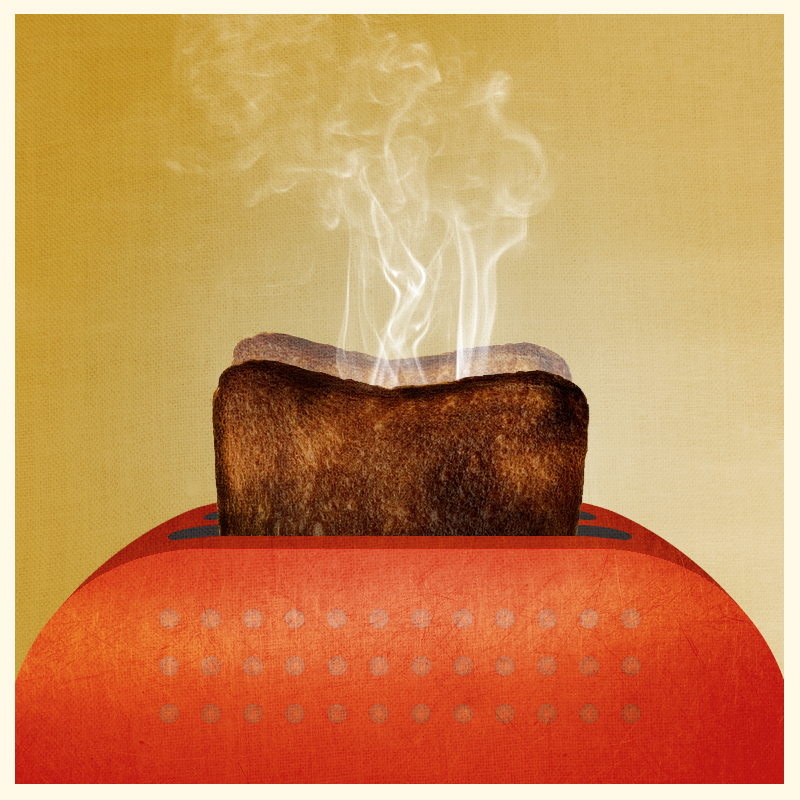
But theatre has a magic that is so earthy and human, something one feels instinctively that we have always done. Before books, before painting, maybe even before music — we acted. Or maybe that’s nonsense, who knows. But ‘theatre’ is certainly confronting in a way other art forms are comforting. Today’s multi-million dollar TV series and movies remove us from anything except a uniform and passive linear experience. VR is probably not going to help here, non-linear but sofa-bound, solitary. Screens seperate us from a large number of sensory inputs that help us modify our behaviour. We ‘perform’ online. Sometimes we perform poorly. The noted anonymity means we don’t see context, or character, or even words, but postures, and we respond emotionally, (and often illiterately). Even with email. The physical boundaries of a stage hold us back from that yet open us up to context and chemistry. I love that — a place where we can safely be challenged. I’m not sure how, (I keep trying), but we can bring the internet into theatre beautifully — we know that digitised information, or the internet, can be used as a tool to amplify and augment the drama. And there are many ways to play with that idea. At the moment I feel strongly that the interface or the device (the ugly phone) should be invisible, not worth mentioning, nor the subject of the drama. Just as noticing the lighting is a sign of poor lighting. But you can also explore where the internet itself and theatre begin to coincide and play over one another. Exploring the edges between Pretend, Play and Reality. Our second play, The Next Stage, was in collaboration with the Griffin Theatre in Sydney and was an attempt to examine how theatre itself was made, and how it could be re-imagined with the internet as a blank page rather than a quill and some ink. We created a writers room model and bombarded it with technological possibility and a great deal of enthusiasm. Once more I began with idealistic hopes and later, some expectations. The play itself was nameless but we called the documentary The Next Stage. The outcome to that experiment was literally revolutionary. Or rather, the audience revolted. We created a documentary that does a much more sophisticated job of explaining the history, the difficulties and the possibilities than I did in my second theatrical post-mortem. So I recommend the website.
I am filled with my usual credulous enthusiasm — tempered with confident fear
There have been other partial collaborations, but today we are a few weeks away from our third ‘proper’ co-production, this time with the amazing Dan Koerner and Sam Haren from Sandpit in the driving seat and one part of three projects we are involved in as part of the 2016 Adelaide Fringe. (We also have a new Cube film to open the Digital Playground and an upcoming Storyspheres Guide to the Fringe). I am filled with my usual credulous enthusiasm — tempered with confident fear. Knowing that digital technology has a (very) nascent relationship to culture, from art to literature to theatre, I increasingly find myself watching like an anxious parent. It seems that what our offspring is doing (as usual) is establishing our boundaries for ‘today’, highlighting future possibilities and, like any toddler, getting loudly animated about an ability to bang things together. Continuing the metaphor I, as a new parent, am completely convinced that my latest little darling is special, remarkably advanced and, quite possibly, a child genius.
Excited? Of course you are, what a build up.
Here is what we are saying officially:
“In February 2016 Google’s Creative Lab in Sydney and Melbourne theatre company Sandpit will premiere a new theatre work — Ghosts, Toast and Things Unsaid — at the Fringe Festival in Adelaide.
Ghosts is an intimate experience in which two audience members (the ‘ghosts’) revisit the kitchen in which they fell in love and grew old together, during 50 years together.
The play features special mobile audio technology which allows the audience to ‘tune in’ to the inner thoughts of the actors as they pan around a 360-degree set.
The result is a mix of live action (spoken on stage) and inner monologue (delivered through tiny speakers embedded in special costumes) which provokes the audience to meditate on our propensity to keep secrets, the words that go unheard, and what this means for our relationships.
The play marries novel production and staging techniques with simple truths about our everyday lives in a way that would not be possible but for the technology that is — literally — woven into the experience.
Ghosts also evokes our current obsession with 360 degree tech — despite a limited run for the live audience, a version of the play will be made available to the whole world in Cardboard — and forms part of an ongoing exploration of new forms of non-linear storytelling.”
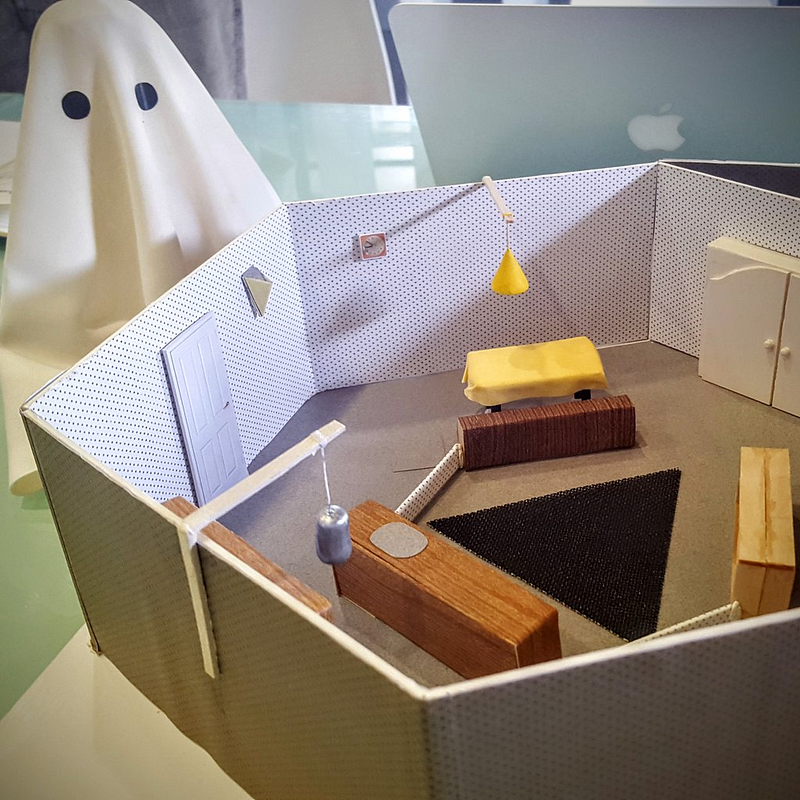
Allow me to tell you a bit about the experience of this play (as I imagine it happening, I could be wrong). Let’s try and imagine what this might be like together, so we can be wrong together. Prejudge it, prejudice ourselves. In my mind the play has a 360 degree set, with an audience of two standing in the middle. In other words the audience stand in the middle of a room. It’s only 20 minutes long so this is not a mammoth exertion. The audience are going to be dressed as two ghosts. They can turn to watch any of the three scenes going on around them. Each of the scenes is from a different period of time in the lives of our protagonist couple. One early scene shortly after marriage, one middle scene and then one much later scene in their timeline.
Have you guessed whose ghosts they are? Correct! Each of you — the audience — play the ghost of one of the two characters, and they get to revisit these moments from ‘their’ life. But you still have to choose how much or how little to watch from each scene, because they are all happening at the same time.
Still with me? So here’s where the digital magic comes in. As mentioned all three scenes occur simultaneously around you. As you turn you will be able to hear the inner thoughts of the character you are looking at (through an ambient speaker in your costume). As your character is in all 3 scenes there are 3 voices and 3 stories.
[Additionally — there are the wife/hubbies thoughts to think about as well. But no one ever really knows what their partner is thinking do they? So you won’t hear them. You only hear your own thoughts. That sounds obvious, but it is actually important.]
You can tune in to your character’s inner thoughts just by moving to look at yourself in that scene, one version of you at a time. Actually, that does sound rather confusing. Perhaps imagine it like three radio plays. With only one character. Playing at the same time. In a kitchen.
“Oh well, once we’ve done it, it will all make perfect sense.”
Hmm.
I can tell what you’re thinking. You’re thinking “wtf?” and it’s not the first time that trying to describe an idea of ours with words has caused confusion. In fact it is almost mandatory. Normally it is because there aren’t good examples or prior art to evoke — and that’s sort of why we do it, these silly ideas. We do them to show that you can think about video this way, or theatre that way, you can make a book that changes as you read it. And very often we say “oh well, once we’ve done it, it will all make perfect sense.”
That line always goes down well when you’re looking for funding.
It may feel like I am giving away some of the surprise here but I am confident it will be the play itself that amazes and delights, not the set, or the technology, not the twist. (I’m sure there will be a twist.) It is the presence of actors that awes. A play would be just as enchanting if they were standing on a milk box wearing a sheet. So I think it is impossible to give spoilers about infrastructure. Acting is, as I may have mentioned, magical, and ephemeral, and just of that moment. So you need to buy a ticket.
Besides, I haven’t even started telling you what actually happens.
<…> (no. I’m not going to tell you what happens.)
At a conceptual level are four ideas within Ghosts, Toast and Things Unsaid that excite me.
- The stagecraft and theatre are unchanged but augmented by (unseen) technology
- There is only one play, but everyone sees a different play
- Time becomes a true dimension, 3 folds of time are overlaid
- The ‘audience’ need to share their experience to unlock the narrative
The stagecraft and theatre are unchanged but augmented by (unseen) technology
What do I mean by this? Well I am quite excited that the ‘tech’ is, a phone. And an app. Quite an elaborate app. But mainly it is just a phone using the gyroscope. It is pretty amazing what you can do these days with an Android device. We even had to use an older model Nexus to make them ‘less’ clever and hi-tech. So the actual play on the stage remains actors acting. Albeit acting what they are thinking. (Which I guess they always should be doing). But it makes for quite a quiet play. And probably would be a little strange without the technology.
There is only one play, but everyone sees a different play
Because you can ‘tune in’ by moving around to look at different periods in the timelines of our characters it is almost impossible for two members of the audience to see exactly the same play. Unless you stand completely still. Which would, with all due respect, defeat the object entirely.
We understand that this tech could be ‘broken’ that some ghosts may even want to challenge it — but all the existing conventions of theatre also exist, so if you are the sort of person that routinely jumps on stage to point out that the pantomime dame is wearing a wig, well, you may want to give this a miss. For everyone else we hope that we can create for you a near unique understanding of the drama that will make it pretty special. Don’t forget that both ghosts are hearing different voices as well.
So we’re not sure who well this scales (except on film) but we think it will really challenge and that is a great goal. It certainly threw up some interesting issues at every stage of development, most of all from a scripting perspective, and how to move the audience through some sort of dramatic arc. We are confident that our incredible dramaturge Kath Fyffe will make a full recovery.
Time becomes a true dimension, 3 folds of time are overlaid
As a teenager I remember getting a little over-excited (and emotional) at Tom Stoppard’s use of time in Arcadia, where he uses time as a layer on the stage in a way that is as physical as the set or the words. It is quite hard to explain the idea of dimensionality, but having three moments in time in the same place is a good place to start. There are certain poetic qualities that are evoked by the notion of points of collapse in time and space. That energy radiates across time and slows, that we experience time only in the same way as we might experience light, or noise, feels like an idea mirrored in our lifespans, so I am excited by the idea of getting those frequencies overlapping and amplifying and distorting. Especially as the act of listening becomes the physical interface in deciphering the signal noise of time.
The ‘audience’ need to share their experience to unlock the narrative
I mentioned that the audience, our ghosts, will experience an almost entirely unique recording of the inner voices of our cast owing to the reliance on your physical position to determine what you hear. In other projects creating a non-linear system where you cannot have a ‘complete’ experience has caused some distress in the audience — i.e. you simply cannot sit and listen to everything, you cannot know it all. It creates FOMO. Which is extra horrific for believers in YOLO.
In fact, even with a great deal of skill you will almost certainly only hear 50% of your character’s lines. And then there is the other character, heard by the other ‘ghost’ — your partner, a friend, a total stranger? These stories of course interlink and over-arch but they are of course only one side of the same story, and who knows how different they may perceive the nature of time and human habit. So we are confident that the journey of your character will be uncovered further by a good chat with your fellow ghost over glass of wine somewhere.
The future of 360 degree video is theatre?
What next? Despite the fact that this is all terribly ‘magical’ and ephemeral and ‘of the moment’ (and ‘you must buy a ticket’) we are creating an additional 360 degree interactive video recording of the play that will work on Google Cardboard (cute!) and live on youtube / online and will give a sense of the experience (although without the ghost costume — you’ll have to conjure that part up at home).
In a number of ways I am excited about this aspect as well. Firstly it means we can take the play to millions of people not just a few hundred Adelaidians. So that’s pretty cool. Secondly, I am interested in how we construct video that works in this format. Conventional (flat screen) video frames a scene and adds action to it. 360 degrees makes that impossible as not having a focus is quite distracting. It cannot be literally 360 degree. Similarly having only one focal point or action scene (often known as ‘looking forward’) seems kind of pointless. Why bother with the remaining 300 degrees of scope?
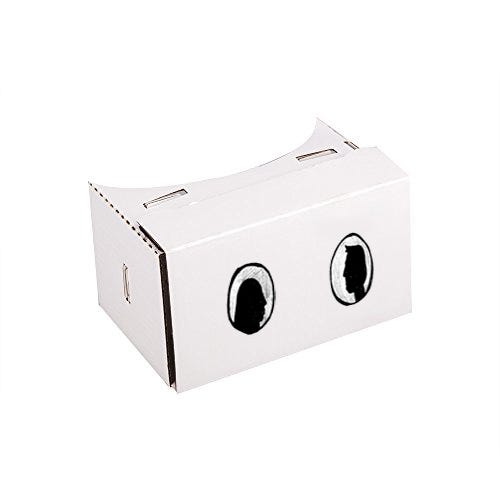
What we have here is a sort of fudge. A 120degree x 3 synchronous films with fuzzy edges. I have long been obsessed with non-linearity in traditionally linear forms (music, video etc) so I love this idea that with the opportunity to tune in to multiple stories in the same space (especially across time) and using directional audio to make each of those stories more real — I find all of that terribly interesting (although not with any confidence of commercial success). Effectively you can have several stories all laid over each other that play out with different contexts, and therefore the meaning of what you are listening too changes even though the actual content is identical. MUCH LIKE LIFE.
OK. Enough FULL CAPS. I think I may be getting over excited. That is the great delight of not having done something yet, anything could happen. It’s far better than having done, or even doing it. Potential is the most exciting part. Just ask a quantum physicist.
Once the set is pulled down and Adelaide returns to it’s normal, lovely state of loveliness we will be trying to engineer opportunities for the play to tour as well — although there are all the traditional cost constraints of this, combined with the fact that the tiny audience means making any money back on a production is impossible (if the tickets are to be priced within reason) — so that may need some sponsorship or help to get it out onto the international circuit. <Hint>.
From the Creative Lab’s perspective our experiment will end here, and we take what we learn and plough it back into further projects but we very much hope that for Sandpit and the cast of Ghosts,Toast and the Things Unsaid that there is much more to be said, and many more ghosts to be invoked.
